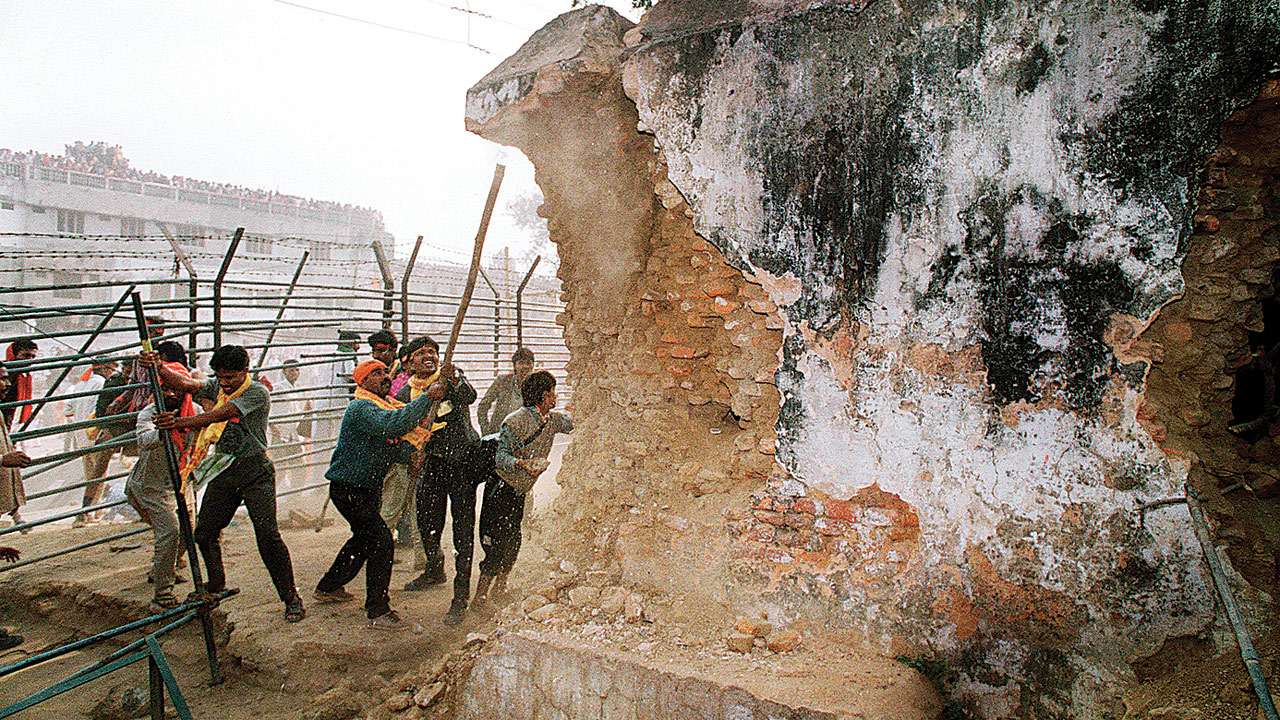
It was in 1990 that the issue of Ayodhya became hot. Before that, in 1978 itself, as a student of archaeology, I had the opportunity to survey Ayodhya. As a student of School of Archaeology, Delhi, I was a member of the team headed by Prof. BB Lal, which was carrying out an extensive survey at Ayodhya.
We found that there existed brick foundations, which supported the pillars of a pre-existed temple. No one had viewed such findings as controversial those days. We examined the facts with due sense of history as archaeological experts.
There were temple-pillars embedded on the walls of Babri Masjid. These pillars were made of a particular stone called Black Basalt. There were Poorna Kalasas’ engraved at the bottom of the pillars as was the practice in the 11th–12th centuries.
In temple art, ‘Poorna Kalas’ is one among the eight auspicious symbols of prosperity. Not one or two, there were 14 such pillars before the mosque was demolished in 1992.
I could see the pillars closely. The team headed by BB Lal included officials of the ASI and us 12 students from the School of Archaeology. We spent around two months at various explorations at Ayodhya. Mir Baqi, Babar’s army chief, constructed this mosque using remnants of a temple, which was either demolished by him or had been demolished by someone else.
While excavating on the back and sides of the mosque, we found brick platforms on which the Black Basalt pillars used to rest. It was based on these facts that I made a statement in 1990 that there existed a temple beneath the Babri Masjid. The moderates among Muslims had started to think that it is better to leave Ayodhya for Hindus and solve the dispute. Some Muslim leaders felt that leaving Ayodhya to Hindus would take the wind out of the sails of VHP. Had such voices got prominence, it would have been possible to diffuse the situation.
A few historians under the leadership of S Gopal, Romila Thapar and Bipan Chandra started questioning the historicity of the Ramayana. They argued that there is no record of demolition of a temple before 19th Century. They even declared Ayodhya to be a Buddhist–Jain centre and they took part in various official meetings as experts on the side of Babri Masjid Action Committee (BMAC).
Many BMAC meetings were conducted under the leadership of Dr Irfan Habib who was chairman of the Indian Council of Historical Research (ICHR). Though member secretary MGS Narayanan of ICHR objected to the meetings of BMAC being conducted in ICHR, he was overruled by Irfan Habib.
The Leftist historians had tremendous influence in newspapers and periodicals, and articles published by them questioning the facts of Ayodhya created confusion in the minds of general public. They were responsible for the volte-face of even the moderates among the Muslims who had favoured a settlement.
Had only this compromise worked out, it would have been a major turning point in the history of Hindu-Muslim relations in our country. This would have resulted in the natural solution to other various contentious issues also.
This lost opportunity demonstrated that not just Hindu-Muslim fanaticism, but communist fanaticism is equally dangerous to our nation.
My statement came out on December 15, 1990. By then, historians and archaeologists had started fierce arguments from both sides. I made it clear in my statement that I had seen remnants of a temple beneath the Masjid.
The most important artifact, which came out during demolition at Ayodhya, was the stone plaque called Vishnu Hari Shila. On the plaque it was inscribed in Nagari script of 11-12th Century in Sanskrit that this temple is dedicated to Vishnu (Rama is the avatar of Vishnu) who killed Bali and the 10- headed (Ravana).
In 1992, when Dr YD Sharma and Dr KM Srivastava studied the site they could find small statues of Vishnu’s avataras, Shiva, Parvati etc. made of clay.
These belonged to the Kusana period (100-300 AD). In 2003, when excavations were again conducted, as ordered by the Allahabad High Court, more than 50 brick foundations, which once supported the pillars of the temple were found.
The “amalaka, which is usually found on the top of the temple and makar pranali” through which the “abhisheka” water flows, were also excavated. Uttar Pradesh’s Archaeology director, Ragesh Tiwari, submitted a report that when the front yard of the Babri Masjid was leveled, 263 temple-related artifacts were found. After a comprehensive analysis of the evidences that had surfaced during the excavation and the discovery of historical artifacts, the Archeological Survey Of India came to the conclusion that there existed a temple beneath the Babri Masjid.
The Lucknow Bench of the Allahabad High Court also reached the same conclusion. To make the excavation impartial, it was ensured that 52 Muslims were included in the team of 131 of excavators. Not just that, the excavation was conducted in the presence of the representatives and archaeological historians belonging to the BMAC group, Suraj Bhan, Mondal, Supriya Varma and Jaya Menon. The ASI had once again, proved its impartiality.
— The writer is an archaeologist